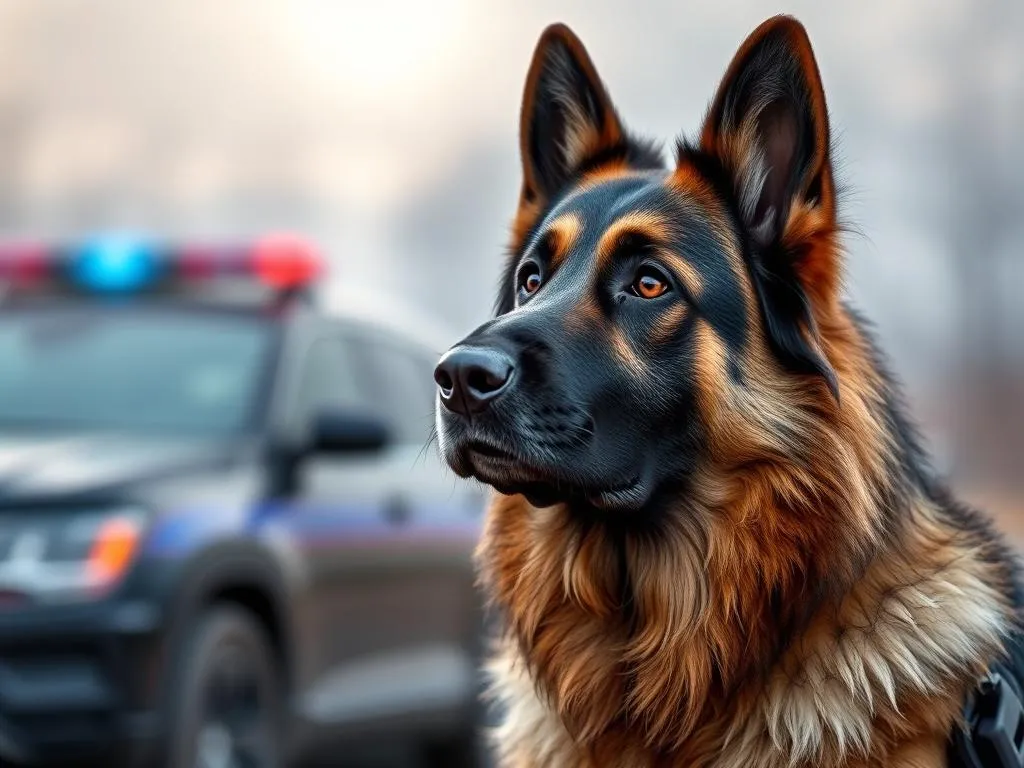
When we think of police dogs, images of heroic canines sniffing out drugs, protecting their partners, and helping in search and rescue operations often come to mind. Police dogs play a pivotal role in law enforcement, and their training is crucial for their effectiveness and safety in the field.
Understanding Police Dog Training
What Is Police Dog Training?
Police dog training is a specialized process designed to equip dogs with the necessary skills to assist law enforcement officers. This training typically encompasses a range of commands, obedience, and specific tasks tailored to the dog’s future role. The training process is not just about teaching commands; it also involves building a strong bond between the dog and its handler, ensuring they can work seamlessly together in high-pressure situations.
Types of Police Dogs
Different breeds are selected for various roles in police work, depending on their innate traits and abilities. Common types of police dogs include:
- Detection Dogs: Trained to sniff out narcotics, explosives, or even cadavers.
- Patrol Dogs: Used for general patrol duties and can apprehend suspects.
- Search and Rescue Dogs: Specialized in locating missing persons, especially in disaster scenarios.
Each breed has distinct characteristics that make them suited for specific tasks, and understanding these traits is essential for effective training.
Training Phases and Duration
Basic Obedience Training
Basic obedience is the foundation of all police dog training. This phase typically lasts 4 to 6 months and focuses on essential commands such as sit, stay, and come. Socialization is also a critical component, as dogs need to interact positively with people and other animals. A solid foundation in basic obedience ensures that the dog is well-behaved and responsive to commands, which is essential for their future specialized training.
Specialized Training
After mastering basic obedience, police dogs undergo specialized training that can last anywhere from 6 months to 1 year. This phase involves teaching dogs specific skills based on their designated roles. For instance, narcotics detection involves training the dog to identify various substances, while patrol training focuses on apprehending suspects.
Several factors can influence the duration of specialized training:
- Complexity of Tasks: More complex tasks generally require longer training periods.
- Breed Capabilities: Some breeds may naturally excel in certain areas, reducing the time needed for training.
Continuous Training and Maintenance
Training does not stop after the initial phases. Continuous training and maintenance are crucial for police dogs, as their skills need regular reinforcement. This ongoing process includes refresher courses, regular assessments, and exposure to different environments and scenarios to keep their skills sharp.
Factors Influencing Training Duration
Breed and Individual Characteristics
Different breeds exhibit varying levels of intelligence, energy, and temperament, all of which can affect training speed. For example, breeds like German Shepherds and Belgian Malinois are often favored for police work due to their high intelligence and eagerness to please. Individual personality traits, such as confidence and sociability, also play a significant role in how quickly a dog can learn and adapt to training.
Training Environment
The training environment significantly impacts the effectiveness and speed of training. Training in a controlled indoor setting allows for focused learning, while outdoor training introduces real-life distractions. A well-rounded training program incorporates various settings to prepare dogs for the unpredictable nature of police work.
Trainer Expertise
The experience and methods of the trainer are critical factors in determining the duration and success of training. Trainers who utilize positive reinforcement techniques tend to see quicker results, as these methods foster a strong bond between the dog and handler. In contrast, outdated or harsh training methods can lead to fear-based responses, hindering the dog’s ability to learn effectively.
Comparison with Other Dog Training
Police Dogs vs. Service Dogs
While both police dogs and service dogs undergo rigorous training, their goals differ significantly. Service dogs are trained to assist individuals with disabilities, focusing on tasks that enhance their handler’s quality of life. The training timeline for service dogs can vary but often takes around 6 months to 2 years depending on the complexity of the tasks they need to perform.
Police Dogs vs. Family Pets
The training commitments for police dogs and family pets can vary greatly. Basic obedience training for family pets typically takes a few weeks to a few months, focusing on essential commands and good behavior. In contrast, police dogs undergo extensive training for specific tasks, which can take years. The time and effort invested in training police dogs is a reflection of the high-stakes nature of their work.
Real-World Examples
Case Studies of Police Dog Training
Numerous successful police dog training programs across the country highlight the importance and impact of well-trained dogs. For instance, the K9 unit of the New York Police Department has produced remarkable success stories. Dogs trained in narcotics detection have led to significant drug seizures, while search and rescue dogs have been pivotal in locating missing persons, showcasing the life-saving abilities of these well-trained canines.
Interviews with Trainers
Insights from professional trainers provide a deeper understanding of the training process. Many trainers emphasize the need for patience and consistency throughout training. They often share anecdotes about the challenges faced during training and how overcoming these obstacles can lead to stronger partnerships between dogs and their handlers.
Conclusion
Summary of Key Points
Understanding how long it takes to train a police dog involves recognizing the various training phases and the factors that can influence duration. Basic obedience training typically requires 4 to 6 months, followed by specialized training that can last 6 months to 1 year. Continuous training is essential for maintaining skills and ensuring that these dogs remain effective in their roles.
Final Thoughts
The world of police dog training is both fascinating and complex. As the demand for well-trained police dogs continues to grow, ongoing research and education in this field remain vital. Understanding the time commitment and dedication required to train these remarkable animals can inspire future generations of trainers and law enforcement professionals alike.









